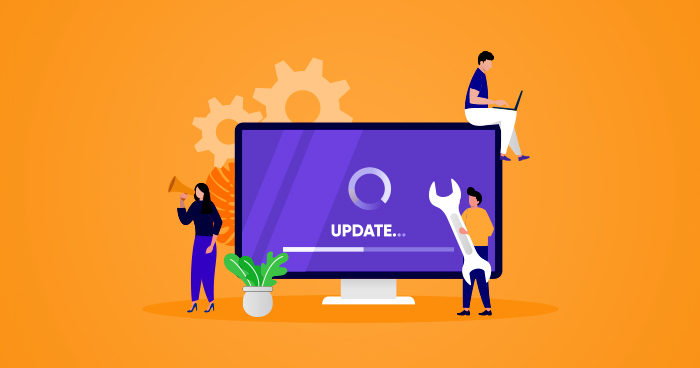Websites have specific purposes in mind. This could be for the purpose of email marketing, information sharing, product sales, or service delivery. Whatever the website’s intended use, it must be maintained to meet its objectives.
Web maintenance is crucial to ensuring that your website is serving its intended purpose. Among the duties involved in website maintenance are content updates, traffic monitoring, and security audits.
If you run a small business, you are aware of how important website upkeep is to your bottom line. However, what exactly is website upkeep, and why is it so crucial? We’ll define website maintenance and discuss the importance of keeping your website up to date in this post. We’ll also go over the various kinds of regular web maintenance that need to be done and offer you some management advice.
What is Website Maintenance?
The process of keeping a website current, functional, and operating at peak efficiency is known as website maintenance. Maintaining your website involves doing things like checking that all of the links are functional, updating content frequently, and repairing any broken links. It also entails more standard housekeeping duties like routinely backing up your website and keeping an eye on its functionality.
Why is Website Maintenance Important?
Maintaining a website can affect sales, security, SEO strategy, and initial impressions for your company. Whether you’re starting a blog or running a business, you need to make sure that visitors and search engines alike will quickly recognize the value of what your site has to offer, or else you run the risk of losing them. This implies that website upkeep is essentially what determines how well you can control and sustain online interest.
Having said that, your website may suffer if you neglect regular maintenance for an extended period of time. Your website will become unresponsive, cease generating leads, possibly contain malware, and experience hacking, all of which will cause issues for visitors who click on it. It might even completely stop functioning.
11 Types of Website Maintenance
-
Security updates
-
Plugin and theme updates
-
Content updates
-
Backup and disaster recovery
-
Performance monitoring and optimization
-
Security scanning
-
User management
-
Accessibility testing
-
Uptime monitoring
-
SEO monitoring
-
Support and maintenance plans
Common Website Maintenance Tasks
Some common website maintenance tasks include:
1. Regular updates: Keeping your website’s software, plugins, themes, and content management system up to date helps ensure security and performance.
2. Backup and restore: Regularly backing up your website’s files and database is crucial in case of data loss or website issues. Additionally, testing the backup restoration process ensures it works correctly.
3. Security checks: Conducting regular security scans and implementing security measures such as SSL certificates, strong passwords, and firewalls helps protect your website from hackers and malware.
4. Performance optimization: Optimizing your website’s loading speed, image sizes, and code can enhance user experience and improve search engine rankings. Regularly checking website performance metrics is vital.
5. Broken link management: Regularly checking for and fixing broken links on your website helps maintain user experience and prevents negative SEO impacts.
6. Content updates: Keeping your website content fresh, relevant, and accurate ensures visitors have up-to-date information and helps with search engine optimization.
7. Comment and spam management: Monitoring and managing user comments and spam on your website helps maintain a clean and engaging user experience.
8. Accessibility and usability checks: Regularly testing your website for accessibility and usability issues ensures it can be easily used by all visitors, including those with disabilities.
9. Monitoring and resolving errors: Regularly reviewing error logs and fixing any issues, such as 404 errors or server errors, helps maintain a smooth user experience.
10. DNS and domain management: Regularly reviewing and managing your website’s domain name and DNS settings ensures they are up to date and pointing to the correct servers.
Remember, these are just some of the common website maintenance tasks. The specific tasks may vary depending on your website’s needs and goals.
Conclusion
In conclusion, website maintenance plays a vital role in creating a successful online presence. Its primary goals are to ensure the security, functionality, and performance of your website. By regularly performing maintenance tasks, such as updating software, implementing security measures, optimizing performance, and providing up-to-date content, you can protect your website from threats, provide a seamless user experience, and improve search engine visibility. Website maintenance is an ongoing process that requires attention and resources, but the benefits of a secure, well-functioning website with updated information and an enhanced user experience are well worth the investment. By prioritizing website maintenance, you can establish trust with your audience, attract new visitors, and ultimately achieve your online goals.
